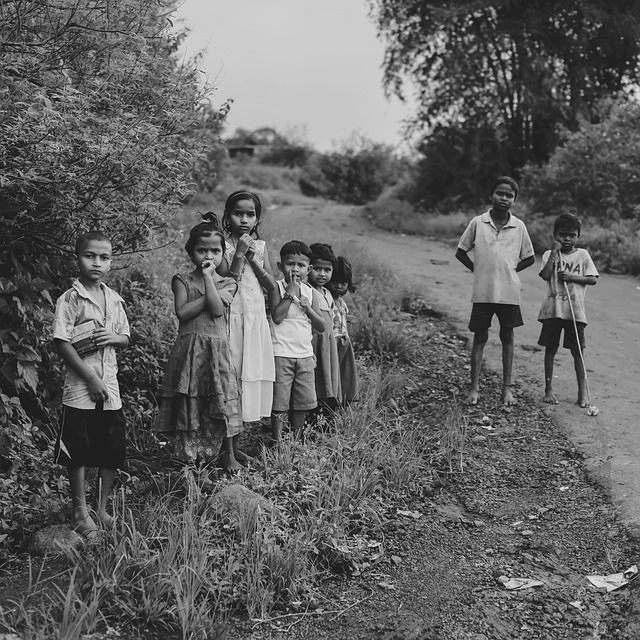Child abuse and neglect have severe consequences, making immediate action crucial. Recognizing indicators like behavioral changes and injuries is key to prevention. Creating a family safety plan is a proactive measure involving clear guidelines, communication channels, and emergency protocols. Open communication between parents, caregivers, and children empowers early issue identification and addresses them effectively. Community support systems, including organizations and government agencies, offer counseling, aid, and educational programs to prevent abuse and promote family well-being through family safety plans.
Child abuse and neglect are serious issues that demand our attention. This article offers professional tips on preventing these devastating phenomena, focusing on proactive measures like building robust family safety plans. We’ll explore recognizing signs of abuse and neglect, fostering open communication, and leveraging community resources to create a protective network. By implementing these strategies, we can contribute to safer, healthier families and communities.
Understanding Child Abuse and Neglect: Recognizing the Signs
Child abuse and neglect are serious issues that can have long-lasting effects on a child’s physical, emotional, and mental well-being. Understanding what constitutes abuse and neglect is the first step towards preventing it. These issues can manifest in various forms, including physical harm, emotional cruelty, sexual exploitation, or failing to meet a child’s basic needs such as food, shelter, or medical care. Recognizing signs of potential abuse or neglect is crucial for ensuring family safety plans.
Some common indicators include unexpected changes in a child’s behavior, like becoming aggressive or withdrawn, or displaying extreme fear of certain people or places. Physical signs may include unexplained bruises, scars, or injuries. Neglect can be evident through a child’s poor hygiene, lack of appropriate clothing for the weather, or frequent absences from school. If you suspect any form of abuse or neglect, it is essential to report it to relevant authorities or seek help from local child protection services to ensure the safety and well-being of the child.
Building a Strong Family Safety Plan: Proactive Measures
Creating a strong family safety plan is an essential proactive measure against child abuse and neglect. It involves establishing clear guidelines, communication channels, and emergency protocols within the household. This plan should detail potential risks, define roles and responsibilities for each family member, and outline steps to take in various scenarios. Regular family meetings can be a great way to ensure everyone understands and is prepared, fostering an environment of openness and security.
Incorporating safety measures like creating secure spaces, setting boundaries, and teaching children about personal safety is crucial. Parents or caregivers should also maintain a support network comprising trusted friends, relatives, or community resources for additional help. Regularly reviewing and updating the plan to adapt to changing family dynamics and circumstances ensures its effectiveness in safeguarding children from potential abuse or neglect.
Fostering Open Communication: A Vital Tool in Prevention
Fostering open communication is a powerful strategy in the prevention of child abuse and neglect. Encouraging honest and safe conversations between parents, caregivers, and children creates an environment where potential issues can be identified and addressed early on. By establishing consistent dialogue, family safety plans can be implemented effectively, ensuring every member understands their role in keeping the household secure. This includes discussing boundaries, reporting concerns, and promoting a culture of respect and trust.
Open communication also empowers children to speak up about any distress or harm they may experience. Teaching them about personal safety, consent, and healthy relationships equips them with the knowledge to recognize abusive situations and seek help. Caregivers can then respond promptly, ensuring the child’s well-being and overall family safety.
Community Resources and Support: A Network for Protection
In many communities, there exists a robust network of resources and support systems designed to protect families and prevent child abuse and neglect. These include local organizations, non-profits, government agencies, and community groups dedicated to family safety plans and intervention services. Utilizing these resources can create a strong protective bubble around vulnerable children and families.
Community centers often serve as hubs for connecting families with essential services like counseling, legal aid, financial assistance, and educational programs. They facilitate support networks where parents can access advice, share experiences, and learn about child development, fostering an environment of awareness and proactive family safety planning. These initiatives empower communities to take collective responsibility for the well-being of their youngest members.
Preventing child abuse and neglect is a collective responsibility that requires understanding, vigilance, and proactive measures. By recognizing signs of potential harm, implementing strong family safety plans, fostering open communication, and leveraging community resources, we can create a supportive network that protects our most vulnerable. These strategies empower parents and caregivers to take charge and ensure every child grows up in a safe, nurturing environment.
